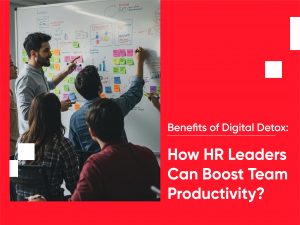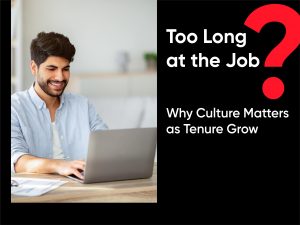Reading Time: 7 minutes
The corporate world has witnessed a massive buzz around hybrid work models since the pandemic. A plethora of research has been conducted since then, and as far as the employee perspective goes, most of them favor hybrid workplaces.
While some organizations have struggled with it, others have transitioned into a hybrid model rather seamlessly. How have they managed to succeed?
Leadership Mindset
A paradigm shift among leaders who have found success in an office setting is the first step toward building a successful hybrid work model. This heavily relies on the leaders’ humble ability to unlearn and re-learn previously held concepts.
To create an effective hybrid workplace, the leadership mindset needs to shift towards flexibility, inclusivity, and trust.
Leaders need to be open to new ways of working, accommodating the needs of both remote and in-person employees. They must also prioritize inclusivity, ensuring that all employees feel connected and engaged with the team regardless of location.
Trust is key in a hybrid workplace, as leaders must trust that their employees will be productive and accountable, whether working from home or in the office. Additionally, leaders must be willing to adapt their management styles and communication strategies to lead a dispersed team effectively.
Cisco’s “Teams Weekly” is an event series that includes presentations and live Q&A on insights, competencies, and team rituals. The series covered well-being, collaboration, communication, growth mindset, and more. The practice acknowledged the requirement of a shift in attitudes and behaviors.
Ericsson’s leadership chat series “MOAI Talks” was used to help leaders and employees understand how they can work together to achieve organizational goals and support each other in improving their work-life balance.
Communicate the Purpose
To create and experience the true impact of any business model, employees need to understand the “why?” Helping them understand the purpose of a hybrid workplace helps foster and sustain engagement.
By explaining the benefits of a hybrid model, such as improved team bonding, collaboration, and innovation amongst teams who come together in the office, combined with increased flexibility and improved work-life balance, leaders can help employees see the value in this approach.
It is also important to outline the expectations and guidelines for working in a hybrid environment, including how to communicate effectively and collaborate with remote colleagues.
Additionally, leaders can emphasize the importance of maintaining a positive team culture and fostering inclusivity in a hybrid workplace. By providing clear communication and setting expectations, leaders can create a shared sense of purpose and help employees feel connected and motivated in a hybrid work environment.
Future-Ready Webinars & Communication by _VOIS enabled Business Leaders and the respective HRBPs to conduct webinars for all employees to give them an overview of the new ways of working and the benefits associated with each of the defined personas. _VOIS provided employees with a forum to address any concerns and solicit input. Business leaders and HR worked together to map all roles to personas depending on role characteristics. These personas have been created based on a balance of factors, including what the customers need, how the business area operates, and whether it is possible to perform the role remotely effectively.
GlobalLogic has an interactive tool-based virtual team collaboration program through which they ensure people come together in virtual reality setups and get to know each other personally through various activities.
People Managers within a Team
People managers play a crucial role in ensuring smooth operations and effective communication. They need to effectively manage remote and in-office employees, ensuring that everyone is working towards the same goals.
People managers must create a work environment that promotes collaboration and inclusion among employees. They need to establish clear communication channels and set expectations for communication and responsiveness.
Additionally, people managers must pay attention to their employees’ well-being and work-life balance. They need to recognize that remote employees may feel isolated and disconnected and ensure they have the support and resources they need to feel valued and engaged.
Overall, people managers must be adaptable, creative, and empathetic to navigate the challenges of a hybrid workplace and foster a positive work culture for all employees.
GlobalLogic’s “Virtual Leadership Mastery” aims at sharpening remote leadership skills such as Virtual Team Engagement, Virtual Delegation, Emotional Intelligence in a Virtual Space, and leading with care and compassion. This has inbuilt sturdy checks, Action learning plans and has an effective mechanism to track the progress through a 30-, 60- and 90-day model. GlobalLogic has ensured that its entire leadership team attends this program.
“New Ways of Working” were announced by _VOIS during the pandemic to optimize productivity and well-being and help employees maintain a healthy work-life balance while working from home. “Revitalised” is their newly launched online and mobile well-being platform, which provides a wealth of information and tools to help employees improve their health and well-being.
Co-Creating Policies
Co-creating policies with employees in a hybrid model empower them by involving them in the decision-making process and giving them a sense of ownership and responsibility. By actively participating in policy development, employees can provide valuable insights that may have been overlooked.
This process also fosters a culture of transparency and trust between employees and management, which can lead to increased engagement and job satisfaction.
In a hybrid model, where employees have more autonomy and flexibility in their work arrangements, co-creating policies ensure that these arrangements are tailored to meet the specific needs and preferences of the workforce, ultimately resulting in a more productive and fulfilled team.
Here are some key steps to follow when co-creating policies with employees:
- – Identify areas where policies need to be created or revised, like work hours, communication protocol, and performance appraisals.
- – Solicit from and deliberate on the input from employees through surveys, focus group discussions, and one-on-one conversations.
- – Work collaboratively with employees to create policies that reflect the needs and preferences voiced by the workforce.
- – Clearly communicate the policies by creating a policy manual, holding training sessions, or providing one-on-one coaching.
- – Review and refine the policies at appropriate intervals by soliciting ongoing employee feedback to ensure the policies remain relevant and effective.
REA India invites their people to co-create and decide on elements of policies that are either new or are due for renewal. Suggestions received are debated internally and shared with the relevant folks before implementing the changes. For suggestions that cannot be incorporated, they ensure they communicate to those people the rationale behind not considering those ideas.
While designing their Remote Working Policy, REA surveyed certain critical elements of the policy to seek views from their people and designed the policy based on what most people said.
They recently launched the ‘Back to Office!’ survey to gauge the willingness and preparedness of people to return to work from the office. The questions in the survey revolved around the vaccination status, current locations, and their desire to return to the office apart from when and for how many days a week. Considering the mixed views across locations, departments, roles, and levels, REA decided not to apply a Company-wide decision but suggested the Leadership Team plan their work-from-anywhere and work-from-office strategy based on their people’s views and respective business needs.
Redesigning Office Spaces
A hybrid workplace is not simply a model or approach to working but also requires the right design and equipment to be successful.
Here are some of the key reasons why redesigning office space for hybrid work is important:
Flexibility: The hybrid work model requires a more flexible workspace, with areas that can be easily reconfigured for different types of work or for different numbers of employees. This may mean investing in modular furniture or adjustable partitions that can be easily moved to accommodate changing needs.
Technology: Technology plays a crucial role in enabling remote work and collaboration. It’s important to ensure that the office space is equipped with the right technology to support hybrid work, such as high-speed internet, video conferencing tools, and cloud-based collaboration platforms.
Wellness: With more people working remotely, the physical office space becomes even more important as a hub for social interaction and connection. Creating a space that supports employees’ mental and physical well-being can help boost productivity, reduce stress, and improve morale.
Cost savings: Redesigning office space for hybrid work can also result in cost savings for companies. For example, by reducing the number of individual workstations and creating more flexible, shared workspaces, companies can reduce their real estate footprint and lower their overhead costs.
Overall, redesigning office space for the hybrid work model is crucial for companies looking to adapt to the changing work environment.
TomTom redesigned their company to enable activity-based working. Employees were empowered with flexibility and autonomy to develop their innovative technology. Designated spaces with dividing panels, full-height partitions, and acoustic materials provide the visual and aural privacy TomTom’ers need for focused work. The collaboration areas allow TomTom’ers to work together and support each other in their activities, including scheduled meetings and quick chats. The learning spaces promote TomTom’s culture of knowledge-sharing. Finally, the social areas enable TomTom’ers to catch up.
State-of-the-art tech runs across every design. The meeting rooms are fitted with the latest audio-visual equipment and a sophisticated lighting management system that adjusts automatically to provide the right amount of light in the workspace. A booking tablet is available to help employees book meeting rooms. Smart sensors measure temperature and CO2 levels to ensure a comfortable indoor climate. Everything was designed keeping in mind the employees’ needs for optimal functioning.
Overall, leaders must strive toward a flexible mindset and be able to instill a sense of common purpose among their workforces. Inviting employees to co-create policies can cement in them the need for this transition. Additionally, great people managers must demonstrate sincere care and interest to drive engagement and collaboration. Finally, offices need to be equipped with relevant technology to make a hybrid workplace a true success.









